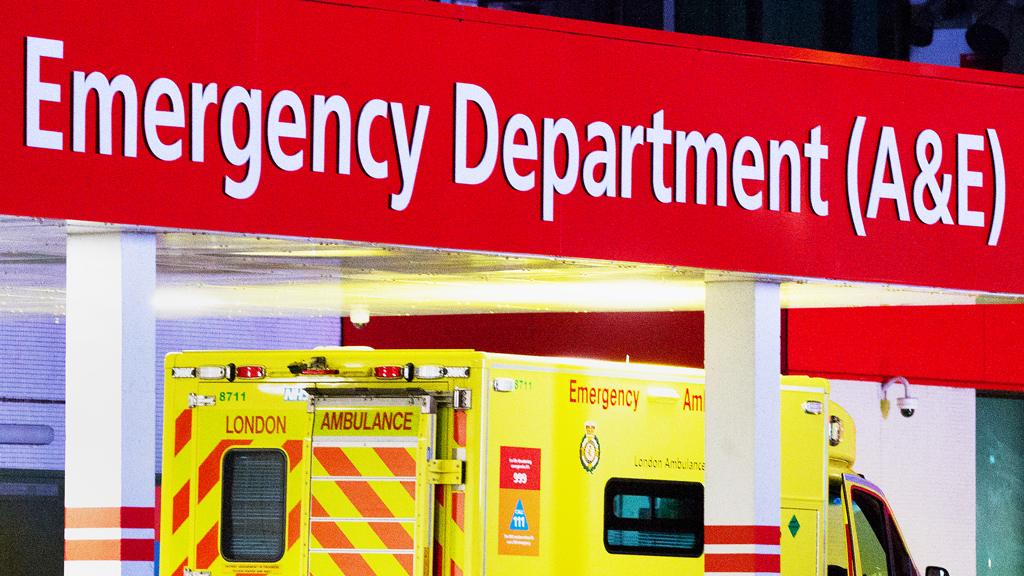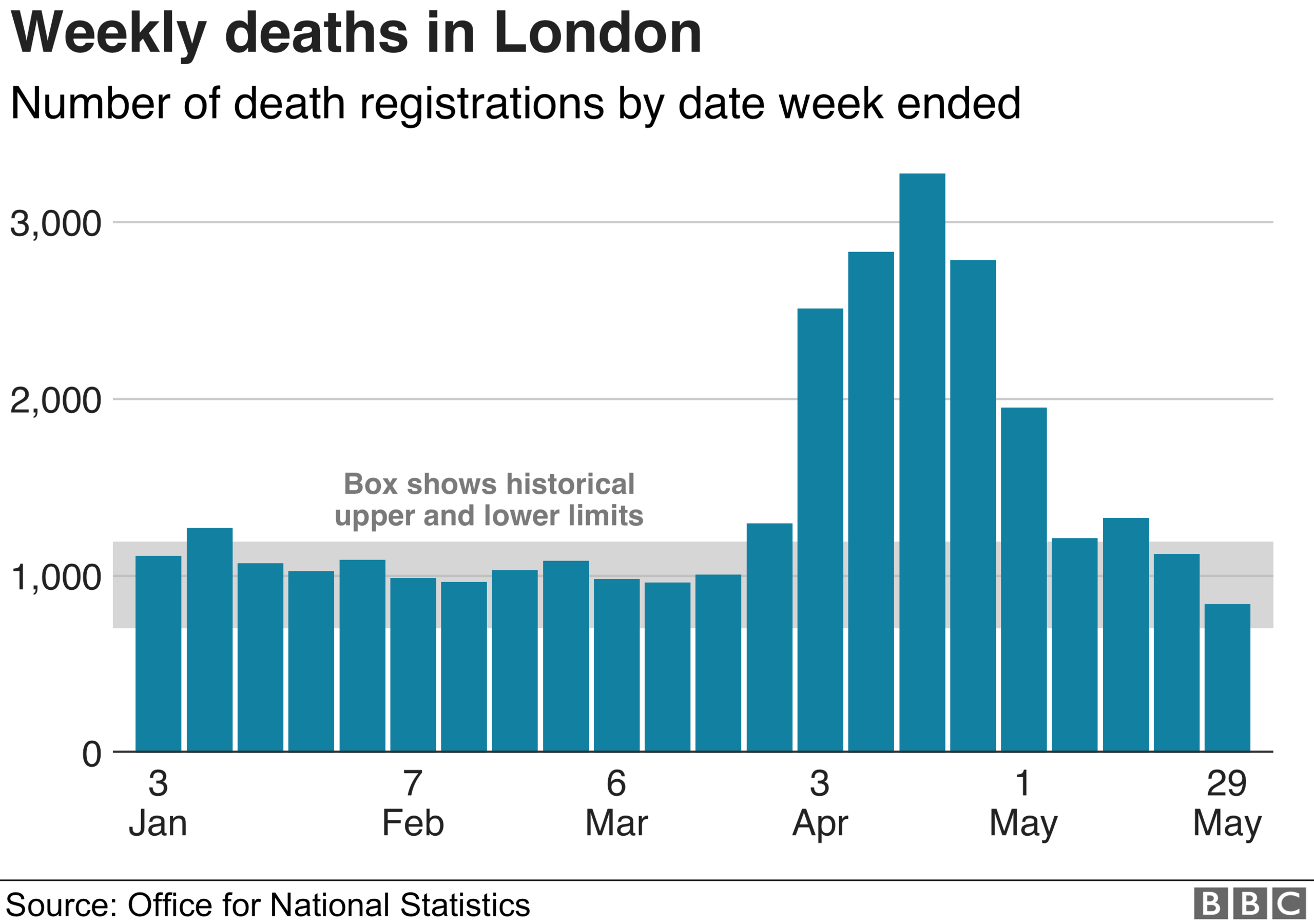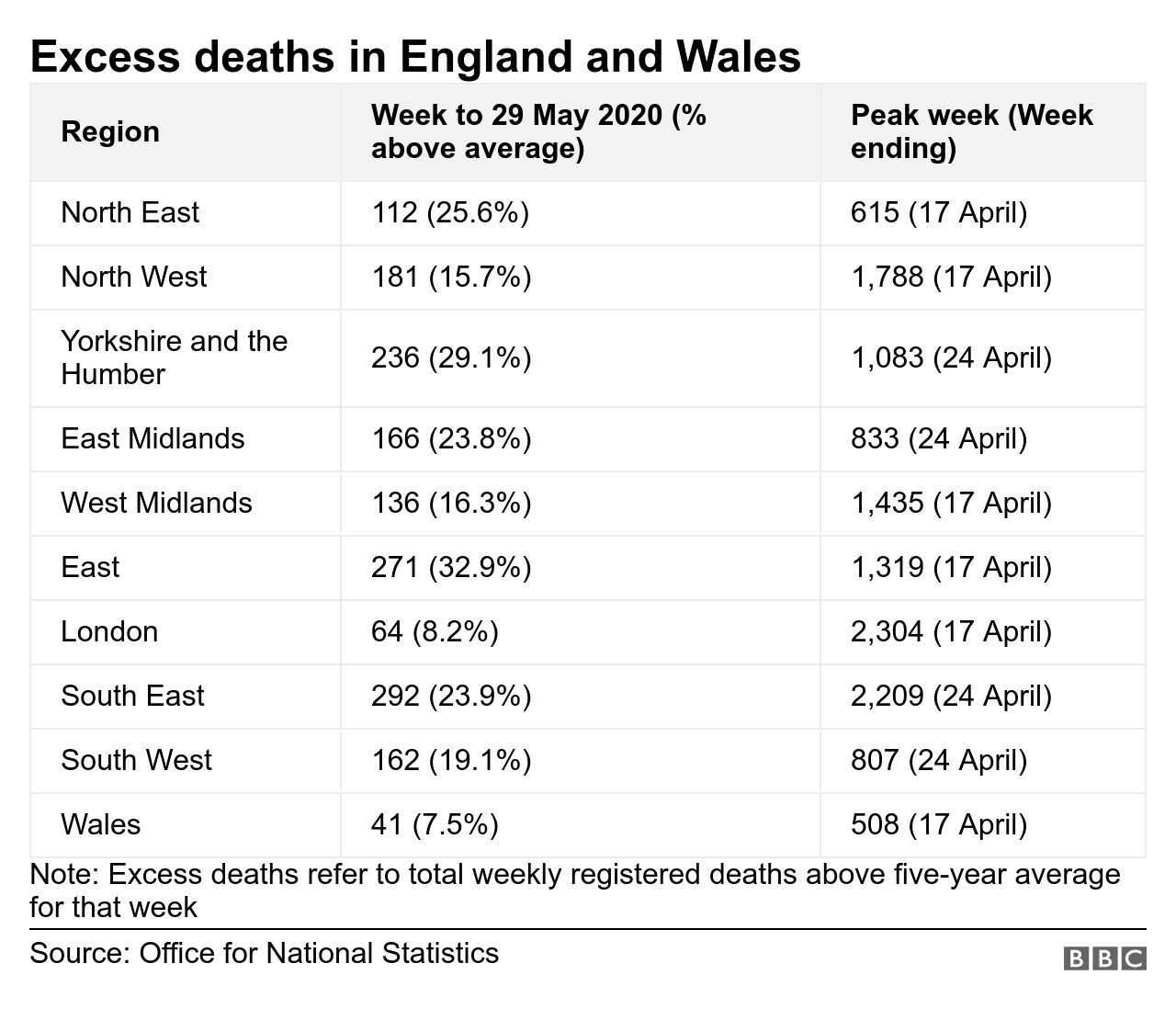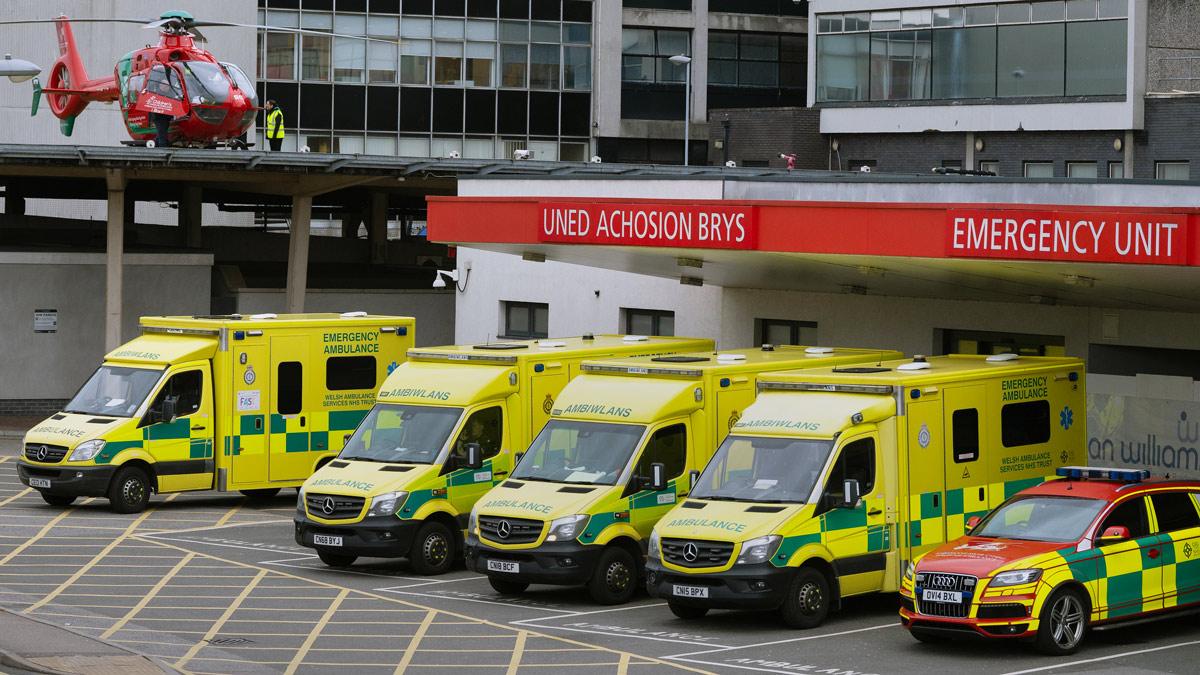Coronavirus: Which regions have been worst hit?
- Published

Weekly death registrations in London, which was the epicentre of the UK's coronavirus outbreak, have returned to the range that would normally be expected, as the country moves further beyond the worst weeks of the pandemic.
In the latest figures released by the Office for National Statistics (ONS), London registered only 64 excess deaths in the week ending 29 May, compared to 2,304 excess deaths in the week ending 17 April.
Excess deaths refer to the number of registered deaths from all causes which are above the five-year average for that week of the year.

Which regions have been worst hit?
By the week ending 29 May, London recorded fewer excess deaths than any other region in England. In the same week, death registrations in Wales also returned to their normal range, only a few percent above the five year average.
Covid-19 deaths
A similar pattern can be seen with deaths specifically linked to Covid-19.
The week ending 29 May was the fourth week in a row in which London did not register the highest number of deaths attributed to the virus.
The North West had the highest weekly count, with 282 death certificates mentioning a confirmed or suspected case of Covid-19.
But every region of England and Wales has passed the peak of the pandemic.
London, the West Midlands, the North West and Wales recorded their peaks in the week ending 17 April.
The South East, South West, East Midlands and Yorkshire and the Humber regions all recorded their worst week of deaths in the week to 24 April.

Regions with a later peak have tended to see a more gradual decline in the number of excess deaths.
Worse than the Blitz
London recorded 21% of the total number of Covid-19 deaths in England and Wales until 1 May, despite having 15% of the population.
In fact, in the four weeks to 24 April, more people were killed by coronavirus in London than died during the worst four-week period of aerial bombing of the city during the Blitz in World War Two.
Registered deaths in London attributed to Covid-19, in those four weeks, reached 5,901 according to the ONS.
In comparison, figures collated by the Commonwealth War Graves Commission show that 4,677 people were killed during the Blitz and buried in London cemeteries in the 28 days to 4 October 1940.

Most deprived areas
Separate ONS data released on 1 May shows that, once you take the age of population into account, the rate of deaths involving Covid-19 is roughly twice as high in the most deprived areas of England and Wales as in the least deprived.
"We know that people in more deprived areas are less likely to have jobs where they can work from home," said Helen Barnard from the Joseph Rowntree Foundation.
"This means they may have to face a very significant drop in income or keep going to work, facing greater risks of catching virus. They are also more likely to live in overcrowded homes, increasing the risk for whole families."
The data shows that the highest rates of deaths involving Covid-19 are in inner-city areas where lots of people live close together.
The majority of the highest age-standardised mortality rates are in London boroughs, such as Newham, Brent and Hackney.

Other factors
One of the biggest issues for policymakers now is trying to establish what other factors have caused the recent surge in excess deaths.
Further deaths from Covid-19 will continue to happen despite the lockdown measures.
But other deaths have happened because of the restrictions, with people not getting the treatment or support they need for other health conditions.

Other nations' figures
National Records Scotland releases figures on a slightly different timescale. In the week to 24 May, there were 1,125 deaths registered in Scotland. That's 11% higher than the five-year average for this week, of 1,017. Around a tenth of the death certificates mentioned Covid-19.
In Northern Ireland for the week ending 29 May there were 316 deaths registered, up from the five-year average of 290. Covid-19 was mentioned on 49 death certificates.

A SIMPLE GUIDE: How do I protect myself?
AVOIDING CONTACT: The rules on self-isolation and exercise
WHAT WE DON'T KNOW How to understand the death toll
TESTING: Can I get tested for coronavirus?
LOOK-UP TOOL: Check cases in your area

This piece has been updated to reflect the latest statistics.


